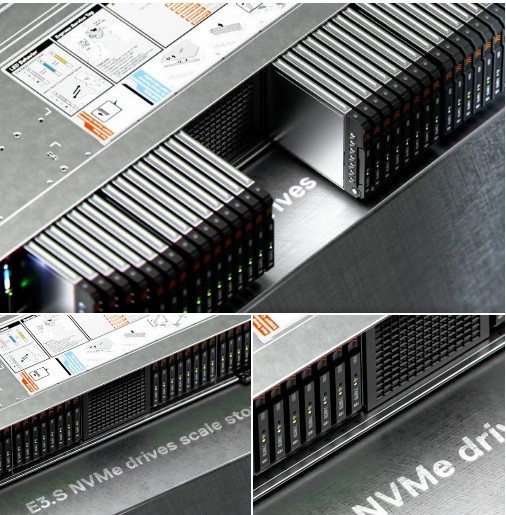Enterprise and Data Center Form Factor (EDSFF) technologies have come a long way since our 2020 SNIA CMSI webinar on the topic. While that webinar still provides an outstanding framework for understanding – and SNIA’s popular SSD Form Factors page gives the latest on the E1 and E3 specifications – SNIA Solid State Drive Special Interest Group co-chairs Cameron Brett and Jonmichael Hands joined to provide the latest updates at our live webcast: EDSFF Taking Center Stage in the Data Center. We had some great questions from our live audience, so our experts have taken the time to answer them in this this blog.
Q: What does the EDSFF roadmap look like? When will we see PCIe® Gen5 NVMe™, 1.2, 2.0 CXL ™ cx devices?
As the form factors come out into the market, we anticipate that there will be feature updates and smaller additions to the existing specifications like SFF TA 1008 and SFF TA 1023. There may also be changes around defining LEDs and stack updates. The EDSFF specifications, however, are mature and we have seen validation and support on the connector and how it works at higher interface speeds. You now have platforms, backplanes, and chassis to support these form factors in the marketplace. Going forward, we may see integration with other device types like GPUs, support of new platforms, and alignment with PCIe Gen 5. Regarding CXL, we see the buzz, and having this form factor be the kind of vehicle for CXL will have a huge momentum.
Q: I’m looking for thoughts on recent comments I read about PCIe5 NVMe drives likely needing/benefitting from larger form-factors (like 25mm wide vs 22) for cooling considerations. With mass market price optimizations, what is the likelihood that client compute will need to transition away from existing M.2 (esp 2280) form factors in the coming years and will that be a shared form-factor shared with server compute (as has been the case with 5.25″,3.5″,2.5″ drives)?
We are big fans of EDSFF being placed on reference platforms for OEMs and motherboard makers. Enterprise storage support would be advantageous on the desktop. At the recent OCP Global Summit, there was discussion on Gen 5 specifications and M.2 and U.2. With the increased demands for power and bandwidth, we think if you want more performance you will need to move to a different form factor, and EDSFF makes sense.
Q: On E1.S vs E3.S market dominance, can you refer to their support on dual-port modules? Some traditional storage server designs favor E3.S because of the dual port configuration. More modern storage designs do not rely on dual port modules, and therefore prefer E1.S. Do you agree to this correlation ? How will this affect the predictions on market share?
A: There is some confusion about the specification support versus what vendors support and what customers are demanding. The EDSFF specifications share a common pin out and connection specifications. If a manufacturer wishes to support the dual port functionality, they can do so now. Hyperscalers are now using E1.S in compute designs and may use E3 for their high availability enterprise storage requirements. Our webcast showed the forecast from Forward Insights on larger shipments of E3 further out in time, reflecting the transition away from 2.5-inch to E3 as server and storage OEMs transition their backplanes.
Q: Have you investigated enabling conduction cooling of E1.S and E3.S to a water cooled cold plate? If not, is it of interest?
OCP Global Summit featured a presentation from Intel about immersion cooling with a focus on the sustainability aspect as you can get your power usage effectiveness (PUE) down further by eliminating the fans in system design while increasing cooling. There doesn’t seem to be anything eliminating the use of EDSFF drives for immersion cooling. New CPUs have heat pipes, and new OEM designs have up to 36 drives in a 2U chassis. How do you cool that? Many folks are talking about cooling in the data center, and we’ll just need to wait to see what happens!

Thanks again for your interest in SNIA and Enterprise and Data Center SSD Form Factors. We invite you to visit our SSD Form Factor page where we have videos, white papers, and charts explaining the many different SSD sizes and formats in a variety of form factors. You may also wish to check out a recent article from Storage Review which discusses an E3.S implementation.
